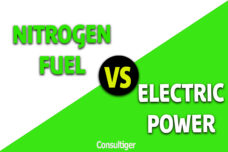Chemicals in Paints
Paints are broadly categorised as (a) decorative paints and (b) industrial oatings. While Decorative Paints are used for covering walls in houses, offices, shops with colour, Industrial Coatings are used by manufacturers to give a colour coat to their products like automobiles, machinery, white goods and other products.
So, what goes into the paint? Well, the paints contain:
- Pigment – to bring in colour and to introduce opacity
- Binder – a resin, to hold the pigment in place
- Extender – larger pigment particles, to improve adhesion and to add strength to the coating
- Thinner – an organic solvent/water, to reduce paint viscosity of the paint.
- Additives – to modify the properties of the liquid paint or dry film. Depending on the type of paint and intended use, varying additives like dispersants, silicones, thixotropic agents, etc would be used.
- fungicides and algaecides – to protect exterior paint from moulds and algae.
Paints are mixed depending upon the final use. Some act as primer, some as undercoat and some may offer stylish finishes like matt, gloss, heat resistant, abrasion resistant, etc.
Binders in paints
The three most important binders (resins) used in modern paints are:
- acrylic polymers (resins)
- alkyd polymers (resins)
- epoxy polymers (resins)
- acrylic polymers (resins)
Pigments used in paints
Pigments help paints with the colour shade and introduces opacity. You will find organic pigments (like azo-, phthalocyanine and anthraquinone derivatives) or inorganic pigment (titanium dioxide, calcium carbonate, iron oxides, zinc oxide and carbon black).
Paint drying
Drying of the paint entails a thin film that is formed attaching itself to the surface of the material. Paints of emulsion variety dry on evaporation of water and by coalescencing of the polymer. They then turn into a hard polymer matrix that acting as a binder for the pigment. On applying paints for glossy purpose, the alkyd polymer actually serves by cross-linking with oxygen present in the airafter water or any solvent has totally evaporated.
Properties of an ideal paint
Well an ideal paint depends on the application. Hence the properties are also defined as per the application/requirement. Broadly, though, following are the key properties of an ideal paint.
- Easy to apply
- Forms a smooth film
- High on opacity
- Dries quickly
- Corrosion resistant
- Water resistant
- Heat resistant
- Anti-abrasive and scratch proof
- Durable
Application methods
There are multiple ways to apply paints:
- Brush
- Roller
- Dipping
- Flow coating
- Spraying
- Electro deposition
- Powder coating
- Vacuum impregnation
- Immersion
Environmental issues
Lead compounds are strict no in paints – especially where customers come in direct contact. Industrial paints could carry lead but even here the quantity of lead is much lower. Paint companies have moved to Emulsion Paints (water-based), Solids content polymers (minimising use of solvent) and powder coatings.












